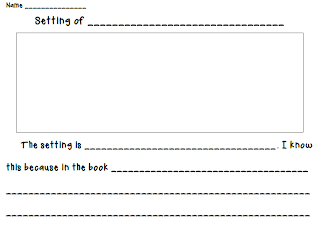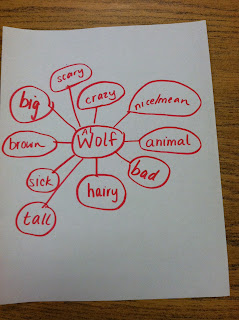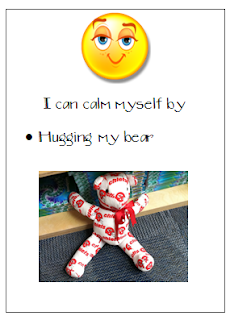I've always had the typical behavior kid like I'm sure most of us have ever year - blurts out, is impulsive, doesn't listen, doesn't follow directions, etc and feel like normally I'm pretty capable of handling most behavior issues in my classroom. Welcome to school year 2012-2013 and it is a whole new ballgame. My typical behavior strategies haven't worked on two of my students who have some extreme behaviors - disruptive, running away from adults, hitting, kicking, screaming, extreme definance, etc. Now, I'm aware this is starting to sound like a pity party (and I'm past that stage lol), but this isn't what the post is about. I wanted to share some ideas that we're trying with these two kiddos in case it might help some of you with difficult kiddos. I can't take the credit for most of these ideas because they were a team effort. I'm hopeful that those of you who also have difficult kiddos have a great administration supporting you. I'm very lucky to have the principal and assistant principal fully backing me along with the Behavior Intervention Teacher who we brought into the mix a few weeks ago. I'm also attending PBIS training tomorrow for my school, so I'm hoping to have some other new ideas soon too!
One of the ideas that my fantastic assistant principal suggested was having a "Safe Place" available in the classroom. "Safe Place" is a designated spot where students can go (either on their own or sent by the teacher) to calm down. Since space is limited in most classrooms and I wanted "Safe Place" to be in an area where I could always see what the child was doing, I ended up taping off a large rectangle towards the back of the room. Far enough away from the direct instruction area that students can't be too distracting, but also within eyesight so I see what they are up to. "Safe Place" works sometimes and doesn't work others. I also have found that a number of kids can use it. I have a few kids who when they have a rough day, they throw a temper tantrum. "Safe Place" has worked extremely well for those students as a place to take a few minutes to calm down and get back on track. Now, for the two extreme students, "Safe Place" works sometimes and doesn't work others.
Now, in "Safe Place" the extreme behavior students and I have come up with a list of activities they can do in "Safe Place" to help themselves calm down. This was another idea from my fantastic assistant principal. The two students and I sat down when they were calm and talked about some things they think would help them calm down when they are angry or upset. Both students picked hugging a teddy bear, drawing a picture or writing words, doing a puzzle, reading a story, and taking deep breaths. Now, in a perfect world someone could be back there with them directing them to pick an option when they go to "Safe Place." In the real world, that someone needs to be teaching the 20 other children in the classroom while the one child works on trying to calm themselves down. Since I can't be back there every time to help them through the process, I came up with "Safe Place" cards, which I adapted from this
Power Card idea I saw on Pinterest. I tweaked the Power Cards a bit and also called them "Student's Name - Safe Place Cards" and put the student's picture on the front. See the images below to take a peek at the "Safe Place Cards." I highly recommend putting them on construction paper and laminating them. Mine didn't last a week before the student tried to rip them apart so thank goodness for a strong laminating machine :-). After laminating them, I hole punched the cards and put them on a ring so the student can flip through the strategies and pick the one he or she wants to use.
In addition to putting the specific student's name on their cards I also put a picture of the student at the top.
We go over the Anger Rules a lot. It's important to go over them many times when the student is calm because when they're angry they're not hearing most of what you are saying.
Since I teach first grade and most of my kiddos are still learning to read, I used words and pictures. I also used pictures of the actual items in the "Safe Place" box so the student would be familiar with what was on the card.
Hope these ideas might be helpful. If anyone has any other ideas they've tried with students with extreme behaviors, I'd love to hear them - add a comment below!
Thanks!

































